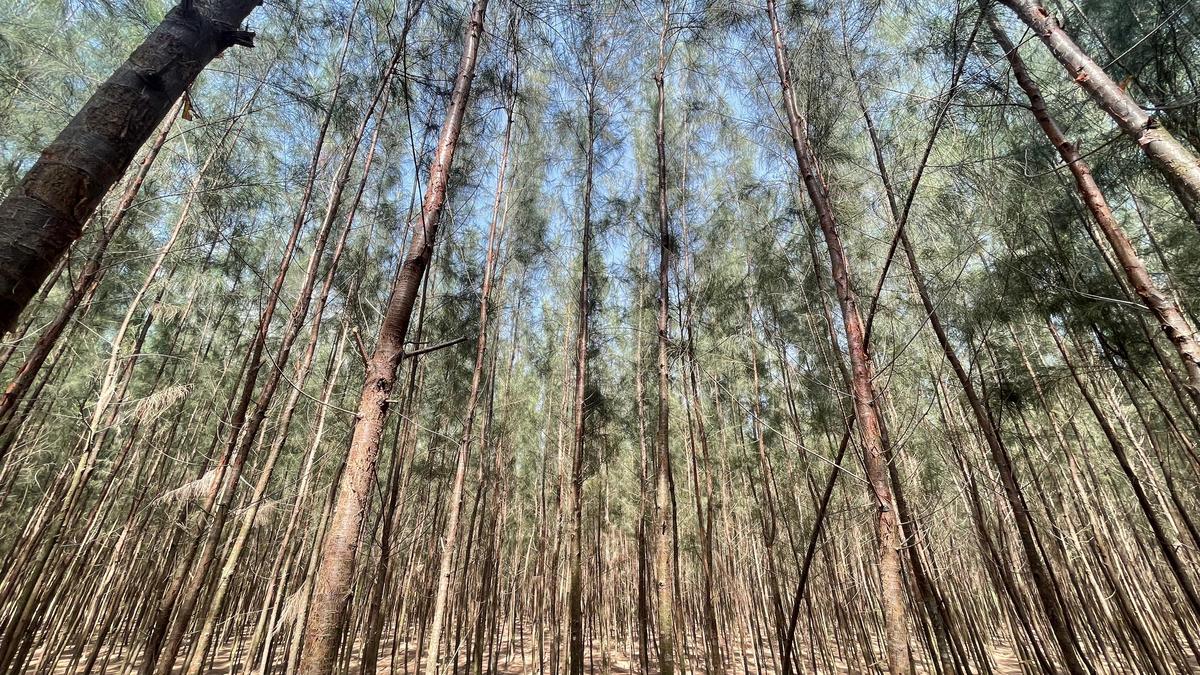Casuarina farming is making a strong comeback in the coastal region of Vedaranyam, Tamil Nadu. This revival comes six years after the devastation caused by Cyclone Gaja, which hit the area in 2018. The cyclone left local farmers facing significant losses in crops and farmlands. However, in recent times, casuarina trees have become a preferred choice for replantation due to their resilience and adaptability to coastal conditions.
Benefits of Casuarina Farming
Farmers in Vedaranyam have turned to casuarina cultivation for several reasons:
- Windbreaks: Casuarina trees grow quickly and act as windbreaks, shielding the region from the harsh coastal winds that often threaten farmlands.
- Economic Value: The wood from casuarina trees is valuable in industries such as construction and paper manufacturing, providing farmers with a steady source of income.
- Soil Improvement: Casuarina trees enhance soil quality by preventing erosion and supporting nutrient retention, especially in the sandy soils common to coastal areas.
Environmental and Economic Impact
The revival of casuarina farming is not just an economic boost for local farmers; it also offers significant environmental benefits:
- Protection from Natural Disasters: The trees help protect the region from future climatic events by acting as natural barriers.
- Sustainability: With the adoption of sustainable farming practices, farmers are optimistic about securing long-term benefits from casuarina cultivation.
Future Prospects
Farmers in Vedaranyam see casuarina farming as a viable long-term strategy to rebuild their livelihoods and strengthen their defenses against future storms. With the right care, this resilient crop can help sustain the local economy and environment.
Multiple-Choice Questions (MCQs):
- What event triggered the need for farmers in Vedaranyam to explore casuarina farming?
- A) Cyclone Vardah
- B) Cyclone Gaja
- C) Drought
- D) Flooding
- Why are casuarina trees considered beneficial in coastal regions like Vedaranyam?
- A) They require little water
- B) They act as windbreaks and improve soil quality
- C) They produce fruits for commercial use
- D) They grow in all types of soil
- Which industry benefits from casuarina wood in Vedaranyam?
- A) Textile industry
- B) Construction and paper manufacturing
- C) Food processing
- D) Electronics
- What is one environmental benefit of casuarina farming in the Vedaranyam region?
- A) It reduces water consumption
- B) It prevents soil erosion
- C) It increases agricultural land size
- D) It enhances air quality
- How are farmers in Vedaranyam ensuring the long-term success of casuarina farming?
- A) By using pesticides
- B) By adopting sustainable practices
- C) By switching to another crop
- D) By increasing irrigation
